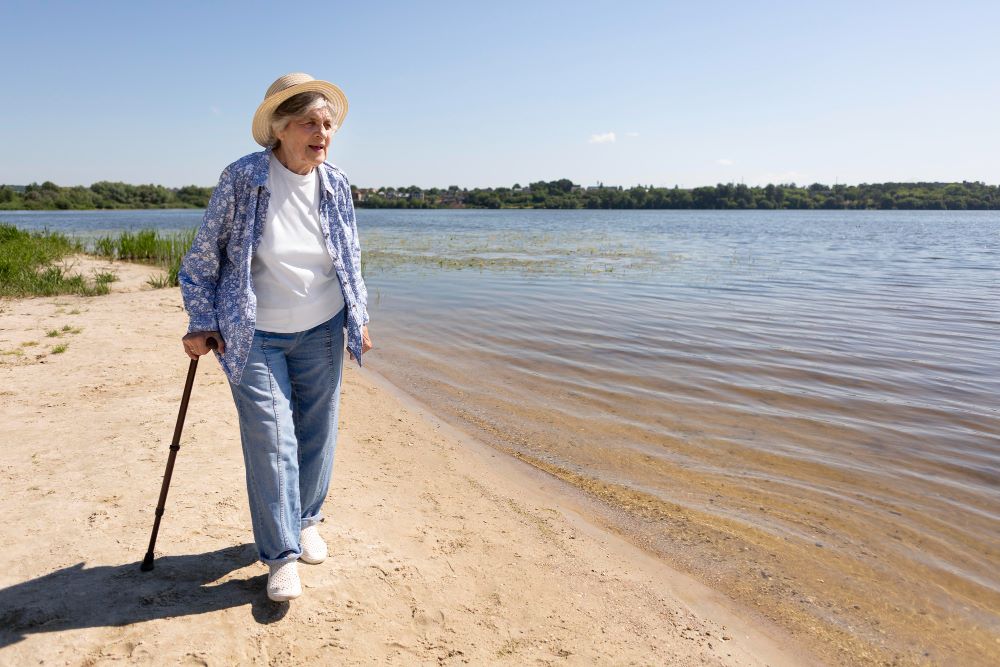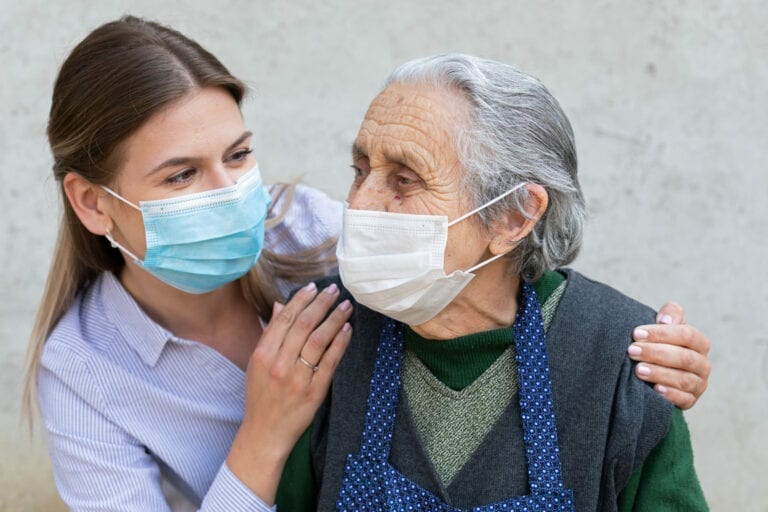As we age, our bodies undergo various changes, and one noticeable change is the development of kyphosis, a condition characterized by an excessive forward curvature of the upper spine. This curvature often leads to a bent-over or stooped posture in elderly adults. Let’s explore the causes behind this phenomenon and understand why some elderly individuals walk in a bent-over position.
Table of Contents
- Understanding Kyphosis
- Causes of Kyphosis in Elderly Adults
- Impact on Mobility and Walking
- Complications and Challenges
- Management and Treatment
- Preventing Kyphosis
- Conclusion
Understanding Kyphosis
Kyphosis refers to an abnormal rounding of the spine that can occur at any age. In elderly adults, the most common form of kyphosis is called “postural kyphosis” or “hyperkyphosis.” It typically affects the thoracic spine, the region between the neck and the lower back.
The spine naturally has some degree of curvature, but when the curve becomes excessive, it can lead to an abnormal posture. Kyphosis can affect people of all ages, but it becomes more prevalent in older adults due to age-related changes in the spine.
Learn More: Lower Back massage techniques For the Elderly
Causes of Kyphosis in Elderly Adults
Several factors contribute to the development of kyphosis in elderly adults:
- Age-related changes in the spine: As we age, the bones and discs in the spine undergo degenerative changes. The intervertebral discs lose water content, becoming thinner and less flexible. This degeneration can result in a collapse of the vertebral bodies, leading to an increased curvature of the spine.
- Osteoporosis and vertebral compression fractures: Osteoporosis, a condition characterized by decreased bone density, is common in the elderly population. Weakened bones are more susceptible to fractures, particularly in the vertebrae. Vertebral compression fractures can contribute to the development of kyphosis and a bent-over posture.
- Degenerative disc disease: The discs between the vertebrae act as shock absorbers and facilitate movement in the spine. With age, these discs can degenerate, losing their ability to provide adequate support. This degeneration can lead to an increased curvature of the spine and contribute to kyphosis.
A Complete Checklist for Caring for Your Aging Parent
Impact on Mobility and Walking
The bent-over posture associated with kyphosis can have a significant impact on an elderly adult’s mobility and walking abilities. Some key factors include:
- Changes in balance and stability: The forward curvature of the spine affects the body’s center of gravity, making it harder to maintain balance. Elderly individuals with kyphosis may feel unstable while walking and are at an increased risk of falls.
- Muscular imbalances and weakness: Kyphosis can cause muscular imbalances, with some muscles becoming overstretched while others become weakened. This imbalance affects the overall strength and coordination required for proper walking.
Complications and Challenges
Apart from mobility issues, kyphosis can lead to various complications and challenges for elderly adults:
- Breathing difficulties: Severe cases of kyphosis can compress the lungs and limit their capacity, leading to breathing difficulties. This can affect an individual’s ability to perform daily activities and reduce their quality of life.
- Increased risk of falls: The bent-over posture and balance issues associated with kyphosis increase the risk of falls, which can result in fractures and other injuries.
- Psychological impact: The visible changes in posture can have a psychological impact on elderly individuals, leading to decreased self-confidence and increased self-consciousness.
10 Signs death is near Dementia Patients
Management and Treatment
Although kyphosis cannot be completely reversed, there are several management and treatment options available for elderly adults:
- Physical therapy and exercise: Specific exercises and physical therapy programs can help improve posture, strengthen muscles, and increase mobility. These exercises focus on stretching tight muscles and strengthening weak ones to restore balance.
- Pain management strategies: Pain associated with kyphosis can be managed with various methods, including medications, heat or cold therapy, and transcutaneous electrical nerve stimulation (TENS). These approaches aim to alleviate pain and improve overall comfort.
- Assistive devices: Depending on the severity of kyphosis, assistive devices such as braces, canes, or walkers may be recommended to provide additional support during walking and reduce the risk of falls.
- Surgical interventions: In severe cases of kyphosis where conservative measures are ineffective, surgery may be considered. Surgical procedures aim to correct the spinal curvature and stabilize the spine.
Preventing Kyphosis
While kyphosis is often a result of age-related changes, there are steps individuals can take to minimize its progression:
- Maintaining good posture: Practicing good posture throughout the day can help prevent excessive spinal curvature. This includes sitting and standing upright, avoiding prolonged slouching or hunching forward.
- Regular exercise and strength training: Engaging in regular exercise, particularly activities that focus on core strength and flexibility, can help support the spine and maintain proper posture.
- Adequate nutrition and bone health: Consuming a balanced diet rich in calcium, vitamin D, and other essential nutrients promotes bone health and helps prevent conditions like osteoporosis.
Conclusion
Kyphosis is a common condition among elderly adults, causing a forward curvature of the upper spine and a bent-over posture. Understanding the causes, impact, and management of kyphosis is crucial for maintaining mobility and overall well-being. By implementing preventive measures, seeking appropriate treatment, and adopting a proactive approach to spinal health, elderly individuals can enjoy an improved quality of life.







